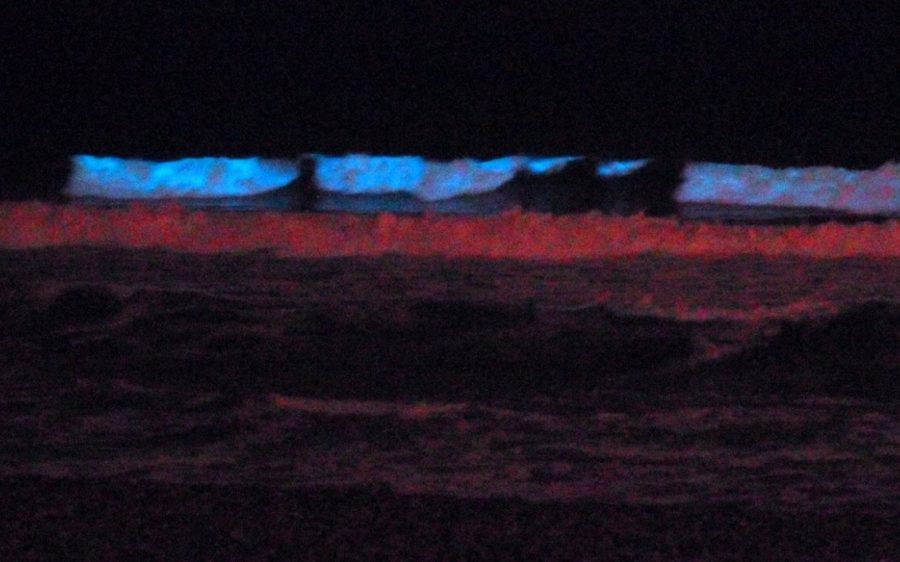Bio-luminescent Beaches: Red Tide in San Diego
Algal Blooms occur with a rise of microscopic algae in freshwater or marine system which cause a neon discoloration shown in the whitewash of waves.
Dinoflagellates, more commonly known as marine plankton, and other organisms have illuminated the waves from La Jolla to Encinitas beaches. A rare and unworldly sighting, happening approximately only once every five years in Southern California. This electric blue Algal Bloom is caused by an increase in the population of algae in freshwater. Algal Blooms occur with a rise of microscopic algae in freshwater or marine system which cause a neon discoloration shown in the whitewash of waves.
Although the radiant crashing of waves may be mesmerizing, these Dinoflagellates are considered harmful due to their toxic effects, on not only marine animals and birds but their rare weakening repercussions on people. If in large amounts, it can alter the air around it, making it difficult to breathe while decreasing the oxygen in the water, harming the plants and animals in the area. This backwash is mostly reflected in Florida or the Gulf of Mexico, where the algae have a high explosive rate of growth.
Most similar to the Karenia Brevis, “these single-celled organisms photosynthesize using chlorophyll like a plant yet they are mobile with the use of two flagella that propel them through the water column,” says a Solutions To Avoid Red Tide (START), Researcher and Journalist. The START is a nonprofit organization who have devoted their research to spread awareness of harmful algae blooms after the ten-month red tide devastation that occurred in Florida in 1996. Concerned citizens hope to “advance education and innovation that improves the quality of our coastal waters.”
Beginning Monday, May 7, scientists are not sure how long this bloom will persist but suggest curious spectators catch the peak two hours past sunset on a dark beach to get the full eerie experience.

Paige Loeffler is currently a senior at Sage Creek High School and she is excited to be joining The Sage! Her hobbies include midnight In-N-Out runs, playing...

Joey Babcock is a programmer by trade, making websites for school organizations such as ASB, Cross Country & Track, and starting this year is the We🅱...


